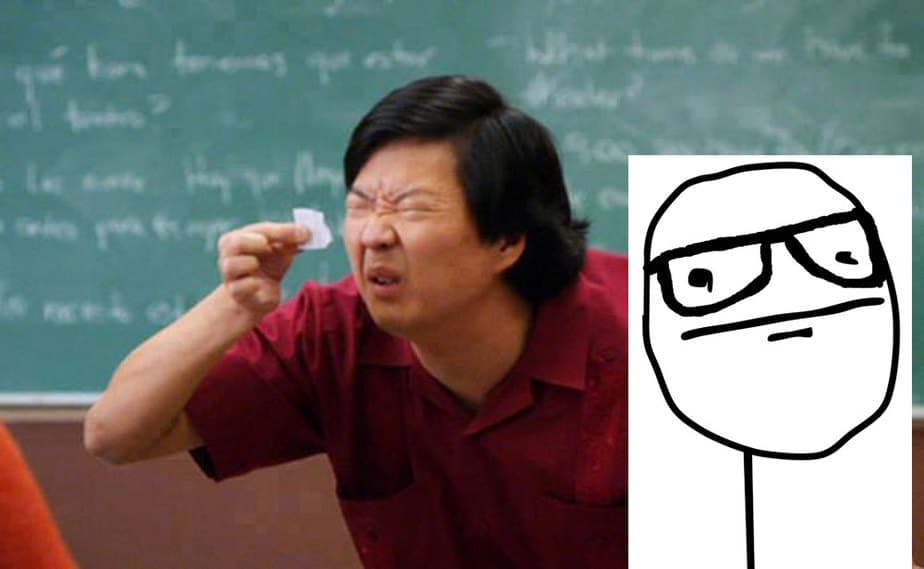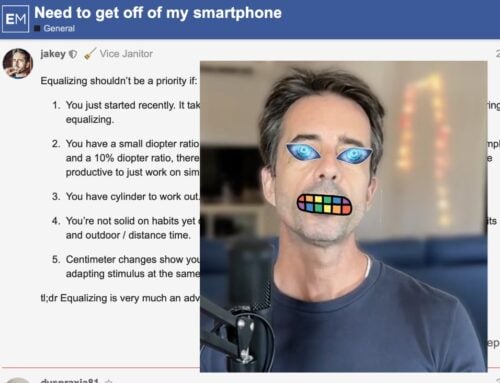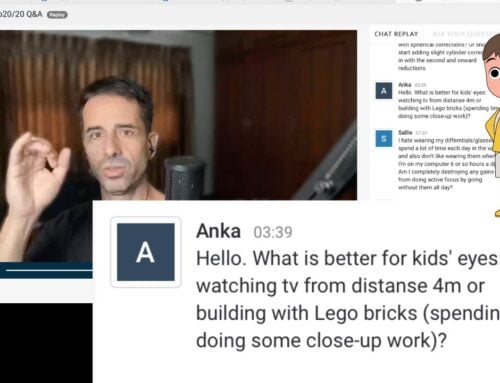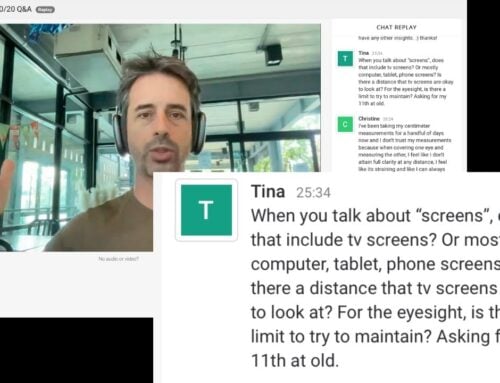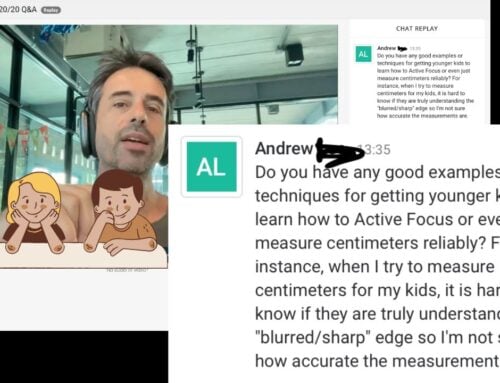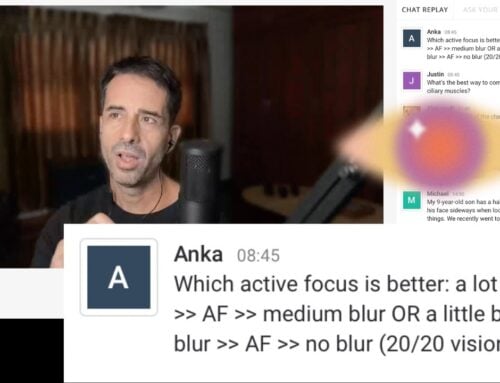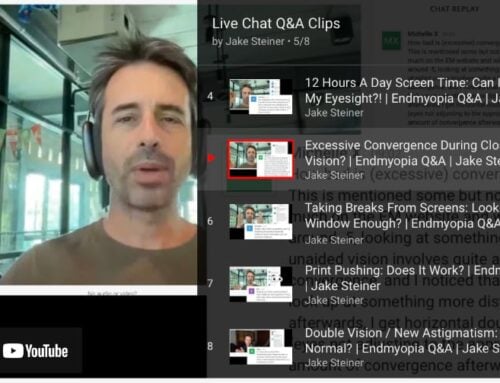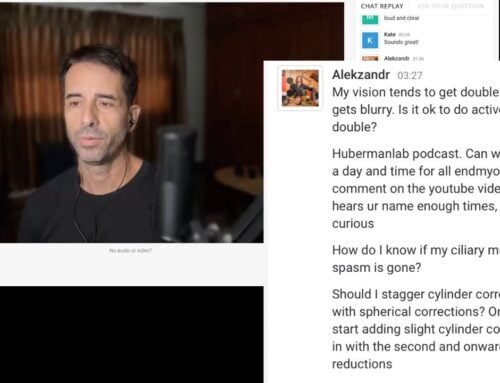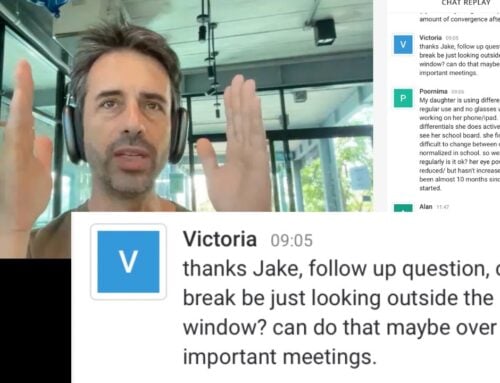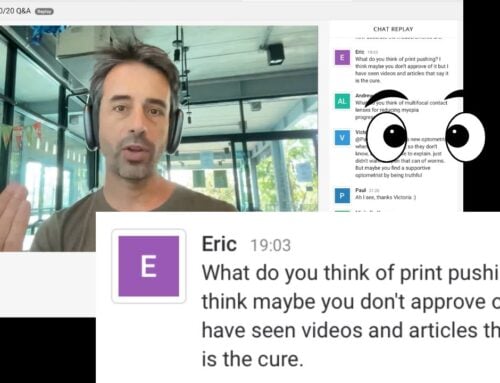You have low myopia, and you’re anxious to stop wearing glasses. You wonder, when’s the right time?
First you hopefully already understand underlying concepts, such as the blur horizon, diopter bubble, and active focus. A whole lot has been written about this by your darling eye guru, like the articles why not to stop wearing glasses, and a whole category dedicated to just focal planes and what to do with them.
Above is a treasure trove of insights you won’t find anywhere else, online or off. So if you are unclear on any of those concepts, light a candle on your Jake-guru altar, and do start with those linked resources.
And assuming you have, let’s look at a few diopter scenarios.
Over -3 Diopters
You’re still in lens territory, with over 3 diopters of minus.
At least, most likely you are. Exceptions are always part of the scenario, though for most cases you need differential glasses for close-up still, and a bit more correction for decent distance vision.
You’re likely in need of both close-up and distance correction.
Use it if you need it. You’ll improve faster, have more fun, avoid annoying side effects (like bad posture from having to stick your nose on your computer screen, or social anxieties from not recognizing your friends).
Don’t let the numbers affect your decision making. Don’t try to force a lower diopter correction before you’re ready. Go with the flow, young grasshopper.
-2 Diopters
Reducing diopter dependence, improving eyesight, is all about enjoying milestones (rather than fretting about the end goal of 20/20).
And -2 diopters is a big milestone.
At -2 you’re finally ready to start ditching glasses for close-up (at least in many scenarios). With good lighting, with relaxed ciliary, a good monitor, nice ergonomically comfortable distance, some active focus, you might be working all lens free. Besides just mentioned criteria other exceptions might be intense graphic work (like architects working on building designs, or 3D work, anything that’s not text may require more correction).
Interesting things happen when you can go all au natural with your eyeballs finally. You’ll notice a leap in improvements, possibly also improved mood, more vibrant colors, an increase in focusing speed, and a refreshing sense of confidence.
All normal, all awesome ‘side effects’ of ditching les goggles de nerds.
But you’re still wearing distance glasses.
-1.50 Diopters
This is where things get interesting.
Also as you read through this, notice the subtle genius of the approach. You’re always comfortable, you always see clearly, you’re addressing focal planes where they make sense. And a lot more:
Close-up is always preparation for distance, as you may have noticed from other guides here.
Just as you first reduce astigmatism in close-up use, then move that to distance, just as you learn active focus in close-up and later move it to distance, you also become acclimated with natural focal plane in close-up first. You got there at around -2 diopters. You had (an average of) 3-4 months to get your visual cortex working with it, it’s now familiar and useful.
So now you move this familiarity to your distance vision. And instead of just randomly changing diopter values (as you would with a non-Jake method), it’s a smooth transition. You’re ready with active focus, you are aware of how to manage double vision effects, you know to do this in good lighting, in a familiar setting, with lots of active focus opportunity.
-1.50 means at least in part, no glasses close-up or distance!
And you might pack your -1.50 glasses when you go on your familiar focus pulling walks, and start without the glasses. Do it while it feels fun and challenging, while you get nice clear flashes, do it till you start to feel you had enough exertion, and then move to the -1.50.
Which will now be extra sharp and the rest of the walk will be even more pleasant.
And that’s how you keep going, slowly progressing to less and less lens use, especially (and only) when you’re not driving, in unfamiliar environments, in less than ideal lighting, in any scenario basically that allows you to transition gradually and safely.
That’s how it’s done.
The amateurs do it all jerky, without reason and logic, confusing their visual cortex and dealing with a lot of blur and discomfort, and slow (if any) progress. You and me, we know the guru ways, we do it all smooth and elegant and (largely) hiccup free.
-1.00 Diopter
Jake’s opinion on that last diopter?
Who needs it, honestly, is what I say.
Or rather more realistically, this is all personal preference. I like to go -1.50 or glasses commando (ie. no glasses). That diopter and a half is a perfect counterbalance to the natural focal plane, it’s exactly how much you need for less than ideal lighting conditions, it’s a good amount of stimulus and gives you a nice contrast of some double vision challenge, vs. an easy clear image.
We’re talking personal preference, here.
Individual mileage varies. You might like to go down to -1.25, to -1.00, etc. That’s fine, guru approved, by all means. Above in this particular scenario merely introducing you to this way as a way that may work well for you.
And that’s it.
Also … if you’re marveling at the elegance (and logical sense) of guides like this one, then you will most likely love BackTo20/20. Because that’s all detailed guides (over 90 individual ones!), and magically structured to come your way exactly when you’re ready for them. All with individual support from me, so you can ask questions and get my feedback just for you. Awesomesauce.
That’s like a sales pitch, almost. Though depending when you find this post, I may either be stingy with invites (when I travel or am busy otherwise, I only do a few), or if life’s all calm and relaxed I might have some for those who ask via interesting and compelling intro e-mails. ;)
(And a lot more entirely free and sometimes insightful low myopia topics – in this category.)
Cheers,
-Jake

